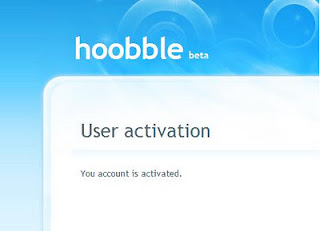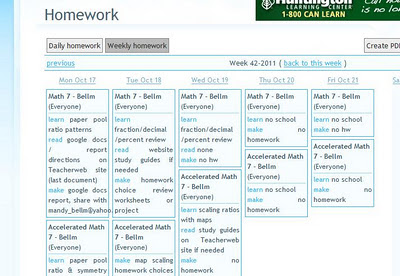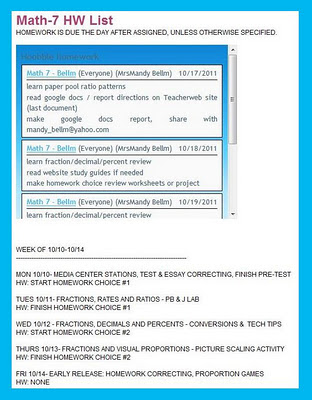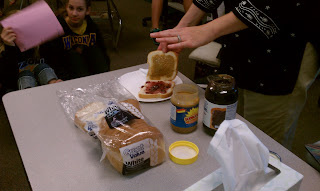Before I begin my post, let me just pat myself on the back that the "student edition" of
Coordinate Graph Art for Grades 6-8 is now available! Only $9.99 per copy on Amazon. If you have a school district interested in a classroom set, that would be willing to set up a P.O. for "CreateSpace.com", I'd be happy to offer a 20% bulk discount. Just let me know at
support@mathbymandy.com.
Now onto some more troubling subject matter, which I am sure has plagued every teacher on the planet to some extent. What do you do with a student who intentionally attacks your teaching style? Or your subject matter? Or the validity of an assignment? Or the grading qualifications for an assignment?
Normally this is not something that I would take personally. I know the 7th grade math standards like the back of my hand. I've developed specific goals and objectives for everything we do in class, and I feel I have articulated the reasoning behind each assignment specifically to students, on several occasions, in words, picture, text, email, blog and Facebook entries. So how does a contrary, snarky, sarcastic piece of student work, turned in late, with no attempt at completion of the actual assignment, get under my skin so badly!?
I need some therapy here, so stick with me. Maybe by blogging about it, I'll feel better. So here's some background. We are in the beginning phases of a unit on similarity, scale change, and transformations in the coordinate plane. Many 7th graders in particular have a rough time retaining %/decimal/fraction concepts, and extra connections between ratio/rate/unit rate/slope and scale factor/dilation/transformation is crucial. Thus leading into why I
insist on completing the
Illuminations Paper Pool unit every year.
Although the State of Minnesota has hereby decreed that all 6th graders should now understand ratio concepts, proportional/linear relationships are still a huge part of the 7th grade standards. Whether or not students have retained a significant portion of that which was learned in 6th grade, I still feel the need to scaffold them from numerical ratios into geometric ratios, through the lens of the Paper Pool project. I highly encourage all nay-Sayers to click the link above and play around with it. You'll see what I mean really quickly.
#1. Reminder: Middle School is a time for defiance. Don't take it personally when a student calls your assignment meaningless, questions what the relevance is to real-world applications, and then further to assert that real-world assignments are pointless. My response: "Are you alive? Do you buy things? Do you look at pictures? Do you look at yourself in the mirror? Do you use Google Earth to look at your house or MapQuest to look at directions? I'm sorry, but proportional relationships DO matter."
#2. Reminder: You may have explained the goals and objectives of the lesson seven times, but your students may not be auditory processors of information. I have been getting all worked up over two particular students' defiance of my "telling of the 7th grade MN standards" several times, and how it personally relates to THEM.
While I have given the students Myers-Briggs personality inventories, learning style inventories, information processing inventories, and extensive annual and unit pre-tests, I am lazily forgetting the fact that 90% OF MY STUDENTS ARE NOT AUDITORY PROCESSORS! As I type this, I'm banging my head against the wall. DUH, you can "say" a million times what the "point" of the lesson is, but if they're not listening, it DOESN'T MATTER! Note to self... write objectives down and type them on my Smart lessons.
#3. Reminder: "Real World Applications" doesn't mean
anything to students in middle school because they DON'T LIVE IN THE REAL WORLD. They live in a semi-cocooned existence, shrouded by parental supervision, religious activity (most of which is extremely helpful), strenuous athletic competition, or the opposite, total indolence. (aka. video games, Farmville, Black Opps 2, Call of Duty, you name it). What the "real world" of having a job, making money to support a family, their future career/livelihood, only has any meaning if they have actually THOUGHT about it.
I pride myself in "real world connections", but now that I've had a couple "zombie beverages" which for a Friday night, you can probably guess what they are, I am having a sort of out-of-body experience... thinking back to my days as a middle-schooler, and what mattered to me then. Was I thinking about my future? Heck no! And if I was, I was so completely lost as to what in a million possibilities I might be doing, that I couldn't possibly narrow down even one... so what benefit does a "real world assignment" really serve?
Which leads me to....
#4. Reminder: Teenagers are constantly reinventing themselves. Any time you can develop curriculum, in any branch of any subject, that connects to what they are doing at
that precise moment, is time well spent. What are they interested in
now? What are they reading
now? What is current in the media/movies
now? And are you willing as a teacher to constantly re-invent yourself to reach the Pop-Culture and Pop-Art of what is NOW??? 'Cuz let me tell you, it's a lot of WORK.
#5. Reminder: What is the gender of the student who is defying you? I am a woman, and I cannot honestly say that I have ever had a female student defy me.
Why is this? Might it have something to do with the fact that we have different motivations, ways of thinking, understandings of our world, or that the majority of the educational system is run by women, while 50/50 or a minority of our "successful" students are males?
There is a constant brushing under the rug of gender issues in education. I actually got to the brink of destroying a relationship with a close colleague over the factor of gender in learning and teaching in America, and it still floats like a palpable fog over every collaborative minute I spend with the person. GENDER DOES MATTER.
Especially when you are a male student, and you've had NOTHING but
female teachers in your math classes for the last 5-10 years of your existence.
You start to wonder... why aren't there more MALE teachers in the world? In math? Is teaching really a valid profession, if men choose not to do it? Why should I respect my teacher? If she were really that good at math, WHY ISN'T SHE AN ENGINEER!?!?!? (like all the other men)
Which leads me to my final point...
#6. Remember: YOU LOVE YOUR JOB! It is your DUTY as a teacher to express verbally and objectively, whatever your gender, that you CHOSE this job. I myself have worked in international transportation, studied and taught Spanish, been a stay-at-home mom, considered majoring in Aerospace Engineering, only later to decide after touring the U department that it was the most BORING thing I could do with my time... but have I told this story to my students lately? No!
We forget as educators that our students want to know US just as well as any story characters in the books that they are reading. In order for us to be role models, they have to understand where we've been, where we're going, and what makes us tick, and WHY on God's green earth, we would choose such a poor paying profession to exercise our talents, with few to no opportunities for either recognition or growth. Because we
love to see that passion ignited in our students, and feel like we had some small part to play in it.
Anyway I am turning into more of a zombie by the minute and I don't really know if I answered exactly why defiant students make me feel so bad as a teacher... but I think the bottom line is, if you're a student, and you're going to write a sassy rebuttal to an assignment that has been given, please remember that...
YOUR TEACHER IS A HUMAN BEING TOO.
By intentionally defying your teacher, you are stating that you think your teacher doesn't have a clue. You don't believe in his/her ability to decide what is good for you, you don't see the value in what they are trying to teach you, and above all, you are insolent and unfeeling enough to record it on paper. OUCH.
I hope that some day you regret it. Although you're probably too doped up on your own hormones to even remember that you wrote it.

































